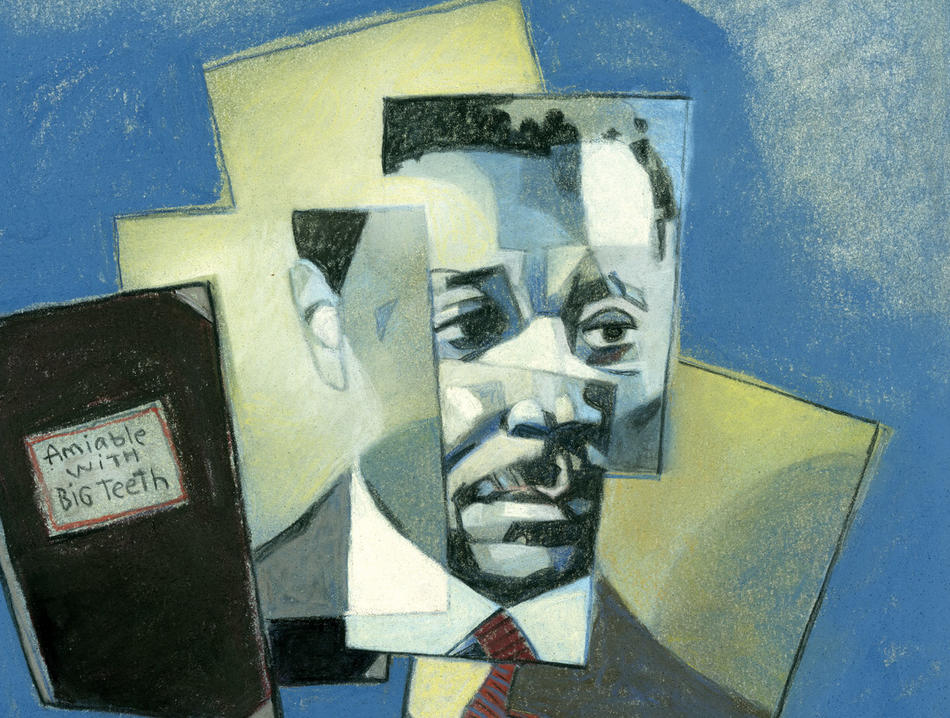Our detective story concerns not Clouseau and the Pink Panther, but Cloutier and the Pink Palace — the nickname for the pink-walled rooms of Columbia’s Rare Book and Manuscript Library. It was there, in the spring of 2009, that Jean-Christophe Cloutier, an intern archivist, was helping to organize the papers of renegade publisher Samuel L. Roth. As Cloutier catalogued another of Roth’s floppy, flaking black binders, he paused, struck by the white card pasted on the cover. The card bore an author’s name and a title. Inside the folder was a yellowed manuscript.
Cloutier was familiar with Claude McKay, the manuscript’s apparent author and a leading light of the Harlem Renaissance. In 2000, Cloutier, a Québécois Canadian, had spent a summer volunteering in a library in Linstead, Jamaica, where he read Songs of Jamaica, McKay’s first book of poetry. Later, in grad school at SUNY–Buffalo, he encountered McKay’s prose, including his most famous work, the 1928 novel Home to Harlem. But the manuscript in his hands, titled Amiable with Big Teeth: A Novel of the Love Affair between the Communists and the Poor Black Sheep of Harlem, rang no bells.
Cloutier knew immediately that he might have uncovered a diamond. “It was exciting, it was great, but it was also a moment of uncertainty, because Samuel Roth — well, he did some things in his career.” Roth was best known for publishing, in 1930, a pirated edition of D. H. Lawrence’s Lady Chatterley’s Lover in violation of federal obscenity laws. “He’d been convicted of crimes and had done some jail time,” says Cloutier. “You don’t know what this guy might have been up to.” Roth, who attended Columbia briefly before the First World War, had also serialized Joyce’s Ulysses without permission, and published a fraudulent Nietzsche memoir, My Sister and I.
Cloutier was better acquainted with Roth and McKay than your average intern archivist. That’s because he was also a doctoral candidate in English specializing in twentieth-century American literature, hired by Rare Books as part of a program begun in 2007 in which graduate-student interns process Columbia’s archive backlogs, an arrangement that exposes students to primary sources while lending the archives the benefit of their scholarly sensitivity.
Now Cloutier had to determine if this manuscript was what it appeared to be: an unpublished McKay novel.
By day, he continued organizing the collection, only offhandedly mentioning the discovery to a coworker (“Hey, there’s a Claude McKay novel in here.” “Oh, yeah, what is it?” “Well, it’s Amiable with Big Teeth.” “I haven’t read that one.”), while keeping an eye out for related materials. By night, he searched for signs of Amiable in biographies, on the Library of Congress website, and on the wider Web.
Nothing.
The archive, however, held some clues: two letters between Roth and McKay, and a book contract dated 1941 — though for a different title. With this evidence, Cloutier went to his adviser, Brent Hayes Edwards, a professor of English and comparative literature and an expert on the Harlem Renaissance. Edwards was, of course, intrigued — he’d always wondered why McKay had stopped writing fiction. The scholars photocopied the manuscript and took a weekend to read it. The following Monday, they compared notes. The manuscript bore several stamps of McKay’s writing, among them the use of the term “Aframerican,” the theme of labor agitation, and a character type that Cloutier describes as “a streetwise guy with political wisdom.” Cloutier and Edwards agreed that it was likely the real thing.
In July 2009, they approached McKay’s estate, seeking permission to publish a scholarly edition of the manuscript. But the estate’s lawyers demanded firmer proof of the novel’s authenticity. Their request was not unusual: the myriad frauds and forgeries in the art world have led to a more rigorous authentication of all art, including rare books and manuscripts.
Cloutier and Edwards began a quest for McKay correspondence that led them to archives across the country (Indiana, Emory, Syracuse), and soon more clues began to appear. They saw references to a new novel McKay was writing in the early 1940s — the right time frame. They learned of a contract between the publishing firm E. P. Dutton and McKay for a book that was never published. And finally, at Yale, they found their smoking gun: a letter from writer Max Eastman to McKay. In the letter, Eastman gives McKay feedback on his latest novel, pulling out specific lines for comment that Cloutier and Edwards then found in Amiable. This was, as Cloutier puts it, “hard archival evidence” that the novel was McKay’s.
In late 2011, two and a half years after the initial discovery, Cloutier and Edwards returned to the estate lawyers with their additional proof. The estate sent the manuscript out to three McKay experts. In May 2012, all three gave their final verdict: the manuscript was authentic. Amiable is likely the novel McKay had under contract with Dutton. Cloutier and Edwards found no letter or other document explaining why the company never published it. According to Cloutier, McKay’s sales record wasn’t great at the time, so it’s possible that Dutton might have feared a flop.
But that was seventy years ago. “McKay’s posthumous reputation has never been higher,” says Bill Maxwell ’84CC, an English professor at Washington University in St. Louis and one of the experts consulted by the estate. “This manuscript couldn’t have chosen a better moment to come to light.”
One reason McKay’s work might be particularly resonant now is because he was, Cloutier says, a “transnational figure.” Born in Jamaica, McKay traveled the world, writing and making connections in leftist circles. In fact, McKay largely missed the Harlem of the Harlem Renaissance because he was out of the country. Cloutier finds parallels between McKay’s works, with their transnational characters, and those of contemporary writers Junot Díaz and Zadie Smith. Though Amiable is set in 1936 Harlem, it’s very much about the world, a satire that takes on Communism and explores the impact of the Italian invasion of Ethiopia on African-Americans and showcases Harlem life in a documentarian style.
“I’d say it’s McKay’s most mature novel, in which he makes his famous problems with plot work for his narrative rather than impede it,” Cloutier says. “The novel is wonderfully memorable satire and McKay’s most realized literary expression of his desire for greater group unity among African-Americans.”
A dozen years after reading Songs of Jamaica in a Jamaican library, Cloutier finds his life bound to McKay’s: the unearthed novel merited a chapter in Cloutier’s dissertation on authors and their archives, and he and Edwards will be jointly writing an introduction to a scholarly edition of Amiable.



